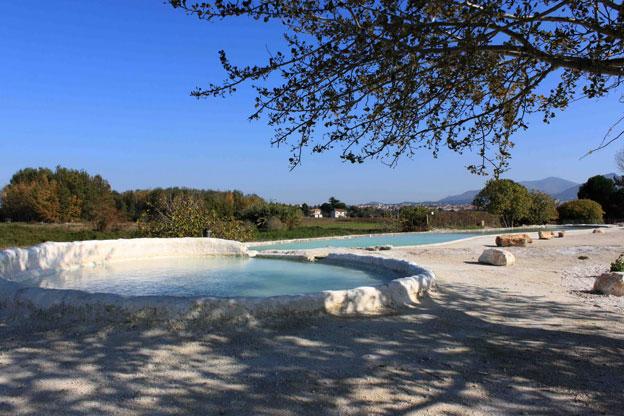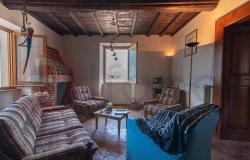If one day you find yourself travelling south from Florence to Rome, or vice versa, make time to take in the town of Viterbo. Two-hours from Florence and one and a half from Rome, Viterbo is a good place to stopover for some serious relaxation.
During the second half of the 13th century, following the expulsion of the popes from Rome, the town became the papal seat and well worth a visit is the Palazzo dei Papi, where, in 1268, following the death of Pope Clement IV, the longest papal election took place. During the three-year election, mostly due to in-fighting, one cardinal resigned and a further three died during the process.
Next to the Palazzo is the Duomo of Santa Maria Nuova, where Saint Thomas Aquinas once preached from the outdoor pulpit; the Cosmatesque marble floor of the Duomo is worth taking a few minutes out of your schedule to see.
Following the departure of the papacy, the town succumbed to the Black Death losing two-thirds of its population and, in 1349, it was struck by a major earthquake; eventually it declined in importance and today it’s the place where Italy’s gold reserves are stored. But despite its chequered history, it has always had a resource that keeps bringing visitors back time and time again.
A few kilometres away is lago di Vico, a caldera lake situated in the basin of the Vico volcano. The lake feeds one of Italy’s most important thermal areas whose epicentre, Bullicame, was described by Dante Alighieri in his epic poem, "The Divine Comedy": "As from the Bulicame [sic] springs the brooklet, the sinful women later share among them, so downward through the sand it went its way." (Inferno, Canto XIV.)
This band of sulphurous-sulphate and alkaline thermal springs that cover over 12km were well known to the Etruscans; at its source, the water temperature is between 58° and 66° C, subsequently the Romans revelled in its therapeutic properties. The ruins of several Roman water-works and luxurious bath-houses can still be found today.
The water feeds several pools and is said to cure many ailments including skin conditions like psoriasis and eczema. The mud below the surface is mineral rich and is used in both therapeutic and beauty treatments, meaning several commercial spas have been built to cater to the influx of tourists, with some costing as little as €12 per person per day*.
For those wanting a less formal affair, there are many free areas for bathing and swimming. These natural bathing spots include the famous Bullicame spring and the popular Piscine Carletti, located a mere 2km from the town centre. Also worth a visit is The Bagnaccio baths, which are positioned 8km northwest of Viterbo; these baths are situated on what was the ancient via Cassia on the road to Montefiascone, and the site is still marked by the Roman ruins of Baccucco.
All of the free bathing areas have substantial parking areas, but no security services, so remember to lock all valuables out of sight whilst enjoying the water and returning rejuvenated.
*Prices for commercial spas will vary.









